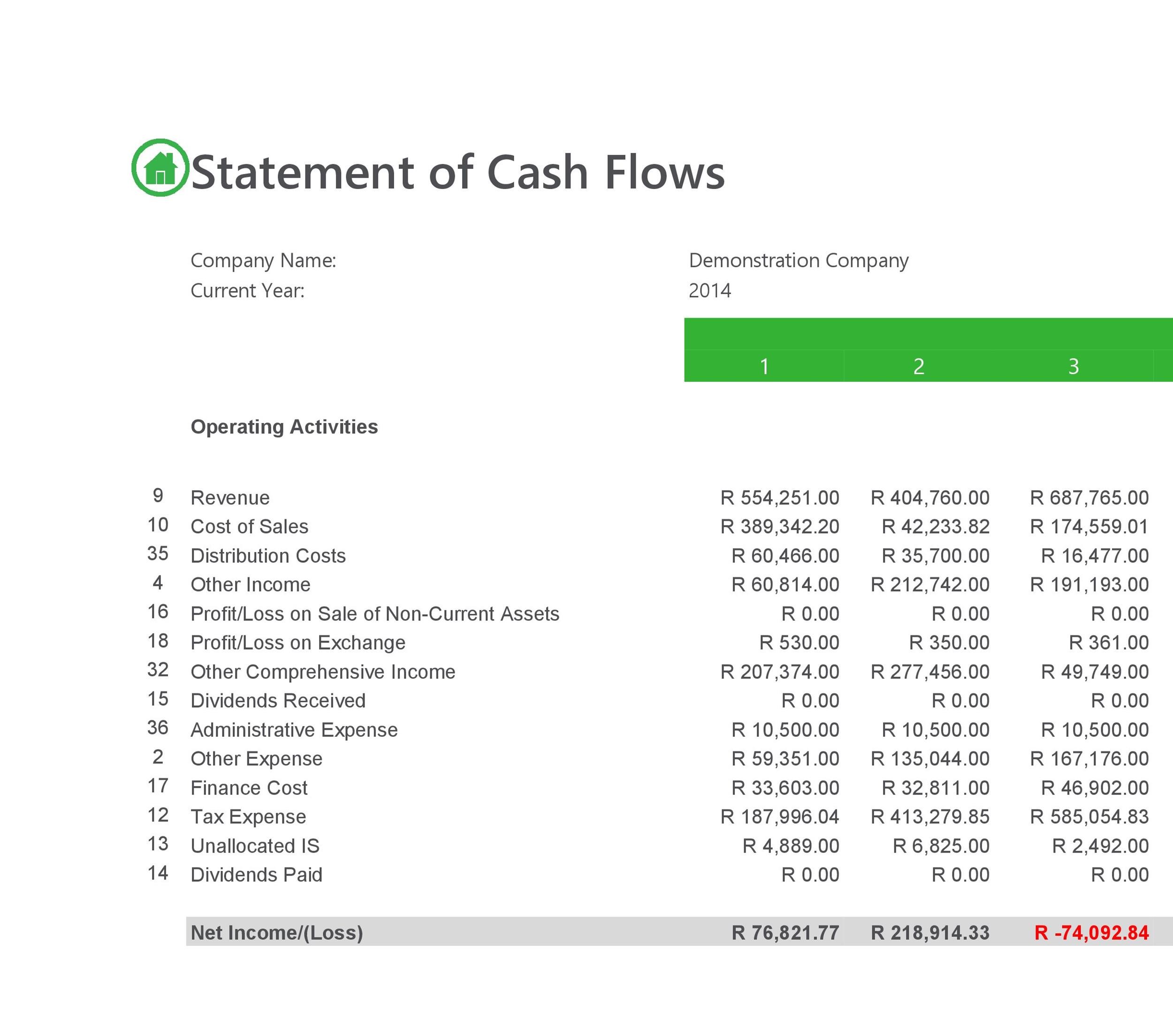
Positive net cash flow generally indicates adequate cash flow margins exist to provide continuity or ensure survival of the company. The magnitude of the net cash flow, if large, suggests a comfortable cash flow cushion, while a smaller net cash flow would signify an uneasy comfort cash flow zone. When a company’s net cash flow from operations reflects a substantial negative value, this indicates that the company’s operations are not supporting themselves and could be a warning sign of possible impending doom for the company. Alternatively, a small negative cash flow from operating might serve as an early warning that allows management to make needed corrections, to ensure that cash sources are increased to amounts in excess of cash uses, for future periods. The beginning and ending balances that appear on the comparative balance sheet are the same as those in the Equipment ledger’s debit balance column on January 1 and September 12, respectively. The $10,000 credit entry is the cost of the equipment that was sold on April 3.
Cash Flow Statement (CFS) FAQs
Increases in current assets indicate a decrease in cash, because either (1) cash was paid to generate another current asset, such as inventory, or (2) revenue was accrued, but not yet collected, such as accounts receivable. In the first scenario, the use of cash to increase the current assets is not reflected in the net income reported on the income statement. In the second scenario, revenue is included in the net income on the income statement, but the cash has not been received by the end of the period. In both cases, current assets increased and net income was reported on the income statement greater than the actual net cash impact from the related operating activities.
Accounting Research Online
- Specifics about each of these three transactions are provided in the following sections.
- The net income on the Propensity Company income statement for December 31, 2018, is $4,340.
- Increases in net cash flow from financing usually arise when the company issues share of stock, bonds, or notes payable to raise capital for cash flow.
- Transactions that do not affect cash but do affect long-term assets, long-term debt, and/or equity are disclosed, either as a notation at the bottom of the statement of cash flow, or in the notes to the financial statements.
Another important function of the cash flow statement is that it helps a business maintain an optimum cash balance. This section covers cash transactions from all of a business’ operational activities, such as receipts from sales of goods and services, wage payments to employees, payments to suppliers, interest payments, and tax payments. By looking at the cash flow statement, one can see whether the company has sufficient cash flowing in to pay its debts, fund its operations, and return money to shareholders via dividends or stock buybacks. The following comparative balance sheets are for Dells Corporation as of 2010 June 30, and 2009 June 30. Also provided is the statement of income and retained earnings for the year ended 2010 June 30, with additional data.
2.1 Types of Business Activities
To reconcile net income to cash flow from operating activities, subtract increases in current assets. Gains and/or losses on the disposal of long-term assets are included in the calculation of net income, but cash obtained from disposing of long-term assets is a cash flow from an investing activity. Because the disposition gain or loss is not related to normal operations, the adjustment needed to arrive at cash sales journal entry flow from operating activities is a reversal of any gains or losses that are included in the net income total. A gain is subtracted from net income and a loss is added to net income to reconcile to cash from operating activities. Propensity’s income statement for the year 2018 includes a gain on sale of land, in the amount of $4,800, so a reversal is accomplished by subtracting the gain from net income.
Report contents
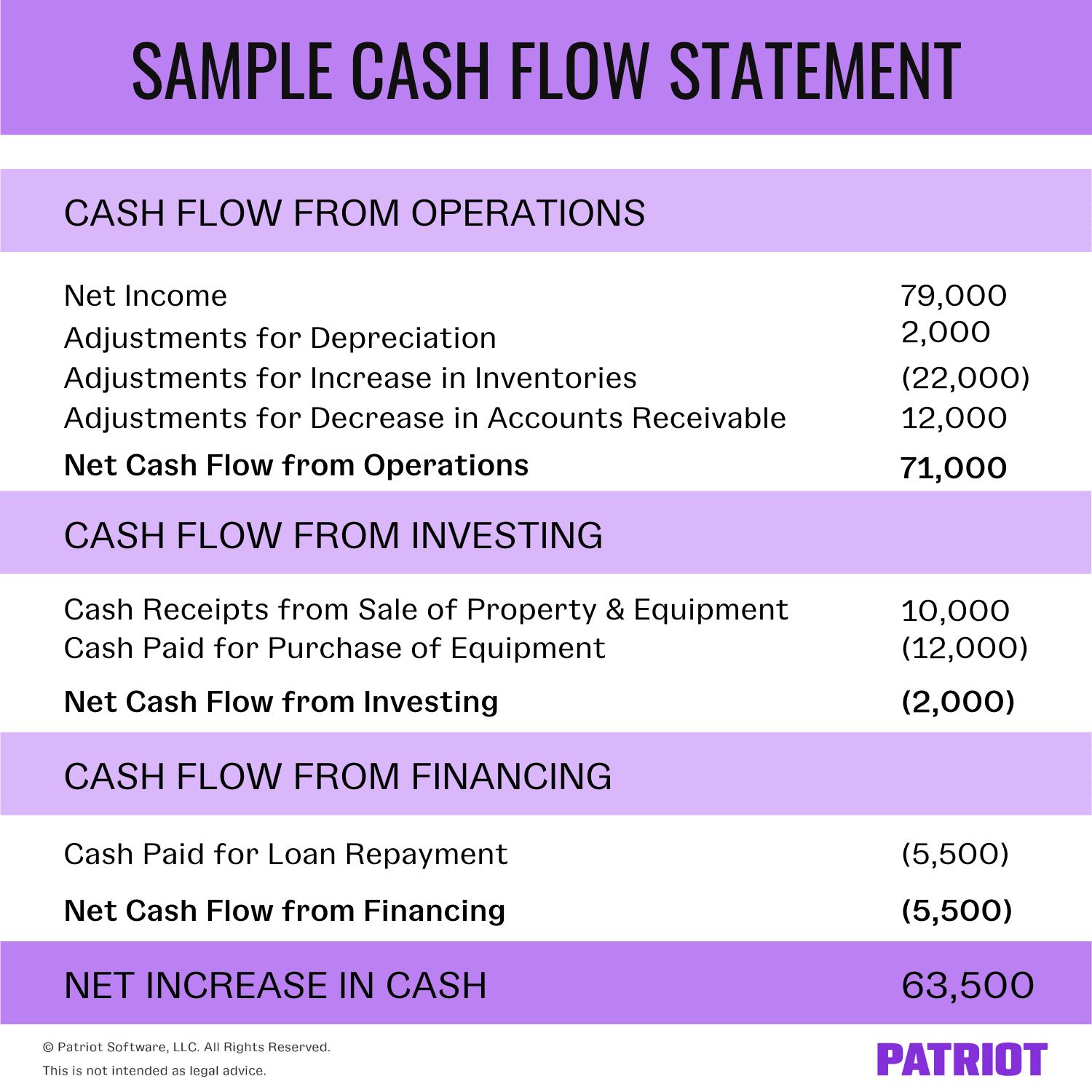
The changes in the value of cash balance due to fluctuations in foreign currency exchange rates amount to $143 million. Together, these different sections can help investors and analysts determine the value of a company as a whole. Textbook content produced by OpenStax is licensed under a Creative Commons Attribution-NonCommercial-ShareAlike License . The OpenStax name, OpenStax logo, OpenStax book covers, OpenStax CNX name, and OpenStax CNX logo are not subject to the Creative Commons license and may not be reproduced without the prior and express written consent of Rice University. Shaun Conrad is a Certified Public Accountant and CPA exam expert with a passion for teaching. After almost a decade of experience in public accounting, he created MyAccountingCourse.com to help people learn accounting & finance, pass the CPA exam, and start their career.
Statement of Cash Flows Indirect Method
But identifying the appropriate activity classification for the many types of cash flows can be complex and regularly attracts SEC scrutiny, which is expected to continue. Prepare the statement of cash flows (indirect method), for the year ended December 31, 2018. The indirect method of presentation is very popular, because the information required for it is relatively easily assembled from the accounts that a business normally maintains in its chart of accounts. The indirect method is less favored by the standard-setting bodies, since it does not give a clear view of how cash flows through a business.
The land cost $100,000 (given on the balance sheet) and there was a loss of $1,000 when it was sold (given on the income statement). The following sample journal entries are reminders of transactions that involve cash. The Cash account is either debited or credited, to indicate a cash inflow or cash outflow, respectively. This method measures only the cash received, typically from customers, and the cash payments made, such as to suppliers. These inflows and outflows are then calculated to arrive at the net cash flow. A cash flow statement (CFS) is a financial statement that captures how much cash is generated and utilized by a company or business in a specific time period.
Under the direct method, actual cash flows are presented for items that affect cash flow. Examples of the items that are usually presented under this approach are cash collected from customers, interest and dividends received, cash paid to employees, cash paid to suppliers, interest paid, and income taxes paid. The difference between these methods lies in the presentation of information within the cash flows from operating activities section of the statement. There are no presentation differences between the methods in the other two sections of the statement, which are the cash flows from investing activities and cash flows from financing activities.
And for practical issues where the guidance remains unclear, we offer our views on how to classify many of these cash flows. Cash flow statements are important as they provide critical information about the cash inflows and outflows of the company. This information is important in making crucial decisions about spending, investments, and credit. The cash flow statement will not present the net income of a company for the accounting period as it does not include non-cash items which are considered by the income statement.
Employees can then use a left-hand menu to find more detailed information, such as their health benefits options and performance reviews. Simple forms and digital signing tools allow employees to complete documents and reviews in a fully digital format, even on a small screen. Gusto is made for startups and growing small businesses with a mix of employee- and contractor-based workforces.
How ADP managed payroll services work
In states where Wave Payroll does not offer tax filing and payment services, the software indicates what paperwork you must file on the state and federal level and how much you need to pay from each payroll run. It comes to the platform along with accounting, invoicing and payment processing for small businesses—replacing a laundry list of tools for many entrepreneurs. For managing contract employees, the platform auto-generates Form 1099 when needed and grants contractors self-serve access to key tax documents. It also allows you to customize how you pay contracts with multiple pay options. Using Paychex Flex, you can access the Paychex Preview Preprocessing Report, which allows you to review your payroll before it runs to remove any errors. You can also create custom reports, such as reports showing your cash requirements, job costing, tax deposit notices, W-2s and more in real time.
Get the right online payroll services for your business
This app is available for both employees and employers who use Paychex Flex. Employers can use the app to enter and run payroll, access employees’ payroll data and view payroll reports. In turn, employees use the app to access and update their personal data and tax documentation. The app also offers Touch ID and Face ID authentication to ensure only authorized access. Team members can use a web browser or the Gusto Wallet the difference between depreciable assets and fixed assets app to clock in and out of work on their Android or Apple mobile devices.
Everything included in our «Select» package and streamline benefits administration with time-saving technology. Adds powerful capabilities on top of payroll, such as garnishment payment service, SUI management, background checks, and job posting through ZipRecruiter®1. These features make payroll tools a step up from running payroll manually with a spreadsheet. Wave Payroll customers posting reviews on product rating sites like that the software is extremely easy to use and set up, is affordable and has free features such as invoicing. Wave doesn’t offer benefits administration, a major drawback, but its recent purchases of companies across the financial sector and its 2019 acquisition by H&R Block promise more capabilities and features to come. TriNet helps small businesses save money by looking for tax credits for each company.
TriNet’s standout features include automated tax and filing support, unlimited payroll runs, a mobile app and time and attendance tracking. ADP RUN is a good choice for businesses that need highly supported payroll tax compliance features in payroll software. It’s designed for companies with fewer than 50 employees but is a good fit if you expect to grow beyond that because you can upgrade to ADP Workforce Now or ADP’s enterprise platform. From this screen, I was also given the option to import time tracking data from ADP’s time and attendance add-on or another time keeping software. Many RUN by ADP users posting on popular review sites love that the software has lots of self-service and automation features to save companies time and money. However, some note that customer service is often unresponsive and they wish the time keeping app were included in RUN by ADP’s plans.
Gusto offers tools to help you store and organize employees’ I-9 and W-2 forms. Gusto then calculates your payroll taxes, deducts them and pays and files tax documents with the correct government entities. It operates in all 50 U.S. states, so you can register your company using Gusto in any state where you do business. HCM managed services is a type of outsourcing designed specifically for organizations with several hundred to tens of thousands of employees. Many are also capable of seamlessly integrating with ERP systems, allowing employers to maintain one global HR system of record.
However, users express dissatisfaction with customer support and reliability in handling tax submissions, which can lead to significant issues for users relying on accurate payroll services. TriNet offers government grant definition three plans ranging from $8 per employee per month to $33 per user per month when billed monthly. However, unlike many competitors on this list, only the most expensive plan offers payroll features.
Small Business
We tested first-hand the usability of the products and the responsiveness of the vendors. In total, we identified nine best payroll services for small businesses that offer an affordable way to run payroll while making the information easy for employees to access and minimizing payroll administration. Check out the rest of our list for more service providers that may meet the needs of your business.
- Paychex Flex users posting on popular ratings sites say the platform is easy to use both on the employer and employee end.
- You might need to opt for paid add-ons to ensure you have all the “must have” features in your payroll service.
- Payroll software should also integrate with benefits administration software for accurate deductions and with time tracking software.
- ADP is the largest and one of the most trusted payroll providers in the world.
- Using Paycor’s mobile wallet, employees can access their wages from the app and even use up to 50% of their earned wages before payday.
EY Payroll Operate benefits
Many online payroll services include features that help you administer benefits in the same platform, as well as integrations for accounting software. Many offer workers the option to get a payment card, so they can receive money before payday and use the card directly to make purchases. An ideal tool for when should a company recognize revenues on its books remote employees who have travel, Wi-Fi bills or office supply expenses, Paycor’s mobile app offers expense tracking and reimbursement tools.
Contents:

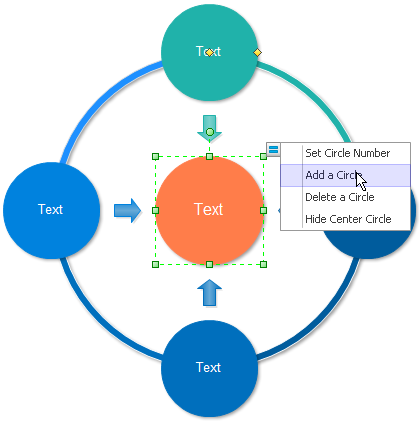
Salaries, rent, insurance, and taxes are examples of the overheads that are related to the time factor. The overhead rate can be determined by dividing the total estimated overheads of the cost center or job by the total estimated units of output. The total amount of overhead accumulated for a production department is ultimately charged to the various cost units of that department. Since this method shows lower product costs than the pricing offered in the contract, the order should be accepted. Absorption costing results in a higher net income compared with variable costing.
The matching principle states that we must match revenue with expenses. Therefore, we can only expense the cost of the units that are sold. Absorption costing is what you probably think of when you think of product costing. Since the beginning of your managerial accounting course, you have been told that product cost consists of direct materials, direct labor, and overhead. Absorption costing is a method of allocating fixed and variable costs to products or services.
Problems | Disadvantages and Limitations with the Absorption Costing Approach:
You can consent to processing for these purposes configuring your preferences below. If you prefer to opt out, you can alternatively choose to refuse consent. Please note that some information might still be retained by your browser as it’s required for the site to function. No distinction is made between the production of hand workers and that of machine workers. If wages are paid on piece rate basis, the time factor is totally ignored. Online, open source and free accounting software for small businesses.

As a direct consequence of this, the widespread adoption of several assumptions about the flow of inventory costs has resulted in the development of a viable foundation for assessing periodic revenue. What that means is every time a product is expected to use one hour of department A’s time, that product will absorb, or if you like, be charged with, $20 of department A’s overheads. There are six types of costing systems which are used to compute the manufacturing cost of a product. Overproduction can occur due to an increase in reported income, which in turn reduces the actual cost of goods sold.
What are the steps in calculating the overhead absorption rate?
With the https://1investing.in/ overhead now expressed as a per unit figure, we can add it to the direct materials, direct labor, and variable overhead to calculate the absorption cost per unit. Since absorption costing includes allocating fixed manufacturing overhead to the product cost, it is not useful for product decision-making. Absorption costing provides a poor valuation of the actual cost of manufacturing a product. Therefore, variable costing is used instead to help management make product decisions.
In contrast, under period costs costing, fixed manufacturing overhead is not included in the product cost. As a result, absorption costing will always yield a higher product cost than variable costing. Absorption costing should be used when determining the profitability of individual products or services.
Best NAD+ Supplements in 2023 For Longevity HealthNews — Healthnews.com
Best NAD+ Supplements in 2023 For Longevity HealthNews.
Posted: Wed, 12 Apr 2023 06:54:04 GMT [source]
When absorption costing is used, the expenditures that appear on the income statement are reduced. This is because more expenses are included in the inventory total at the end of the period. Absorption cost accounting (also known as the “Cost-Plus” approach), is a method that is centered upon the allocation of Manufacturing Cost to the product.
Absorption Costing Definition
A fixed cost is a cost that does not vary with the level of production or sales. Allows a company to understand the full cost of each product or service it provides. Helps in determining the total actual cost of goods sold and the cost of inventory on the balance sheet. One of the main reasons for absorbing overheads into the cost of is for inventory valuation purposes. To find COGS, start with the dollar value of beginning inventory and add the cost of goods manufactured for the period.
The direct costs may include direct labor costs and direct material costs, whereas the production overhead costs may include variable overhead costs and fixed overhead costs. Under absorption costing, the fixed manufacturing overhead costs are included in the cost of a product as an indirect cost. These costs are not directly traceable to a specific product but are incurred in the process of manufacturing the product. In addition to the fixed manufacturing overhead costs, absorption costing also includes the variable manufacturing costs in the cost of a product.
Download the free7 Habits of Highly Effective CFOs to find out how you can become a more valuable financial leader. If you need help with other Managerial Accounting Topics check out our archive or check out our list if youNeed help with your accounting classes through the links to see our other offerings. As a administrator i am trying to provide you the the content easy to understand and remember. I always use easy English and simple examples from real life for better understanding. For example, if you spend $100 on advertising, you would assign that cost to the marketing cost pool. If you spend $50 on customer service, you will assign that to the customer service cost pool.
- Examples of variable manufacturing overhead are utility bills and supplies.
- In practice, if your costing method is using Absorption Costing, you are expected to have over and under absorption.
- This method is mostly used if the industry is labour-intensive and the labour is mostly unskilled or semiskilled.
- This could make your products less competitive in the marketplace and result in lower sales.
- For example, given sales of $80,000 for the year and 2,000 units sold, the price per unit is Rs. 40 .
Under this method, prime cost is used as the basis for determining the overhead absorption rate. It refers to the application of overheads based on the number of units of output manufactured during the period. Using these methods, overheads are recovered, charged to, or absorbed in the factory cost. The process of such charging to or recovering of the overheads in the cost of production is called overhead absorption.
Because fixed costs are spread across all units manufactured, the unit fixed cost will decrease as more items are produced. Therefore, as production increases, net income naturally rises, because the fixed-cost portion of the cost of goods sold will decrease. When you talk about ‘manufacturing overhead’, it refers to all of the indirect costs that are incurred during the production process. They are usually calculated and assigned to a product at a predetermined rate.
As we said, what we’re trying to do here is estimate the full production costs of our products. The full production cost of our products will be made up of the direct costs per unit plus the overhead absorbed per unit. The direct cost per unit will comprise of direct materials, direct labour etc. Add to that the overhead absorbed per unit, which we do using our overhead absorption rates, and we have an estimate for the total production cost at the start of the period. Once we understand what the full production cost is, we obviously know that if we want to make some money, our price needs to be higher than that. Furthemore, it would allow us to set up budgets which are very, very important for the planning cycle of the business.
Over the year, the company sold 50,000 units and produced 60,000 units, with a unit selling price of $100 per unit. If 25 hours are spent on a job, then the absorption on the job will be of $0.2 x 25 hours (i.e., $5). This method should be applied when labor is the main factor of production. It gives reasonably accurate results when the quality and prices of raw materials do not differ substantially. Therefore, it becomes necessary to charge overheads to the cost of products, jobs, and processes according to certain well-established norms and scientific reasoning.
How to Calculate Absorption Pricing
Activity cost drivers give a more accurate determination of the true cost of business activity by considering the indirect expenses. May not provide as much information for management decision-making as variable costing. ‘Absorbed overhead’ refers to manufacturing overhead that’s been applied to a manufactured product or other cost object. When material forms major part of total cost, time factor is ignored.
When doing an income statement, the first thing I always do is calculate the cost per unit. Under absorption costing, the cost per unit is direct materials, direct labor, variable overhead, and fixed overhead. In this case, the fixed overhead per unit is calculated by dividing total fixed overhead by the number of units produced . Overheads are firstly absorbed into cost units, which are just products produced, using the overhead absorption rates.
Next, determine which part of the manufacturing overhead is fixed in nature and divide the value by the number of units produced to arrive at a per-unit cost. This method may be used to calculate overhead absorption when you’re manufacturing a product that is labour intensive , but there is little machine involvement, and therefore low machine-related expenses. If machine operator’s wages are also added to the ordinary machine hour rate it is called comprehensive machine hour rate. But other costing experts object to such a procedure because, it makes a direct cost into an overhead item.
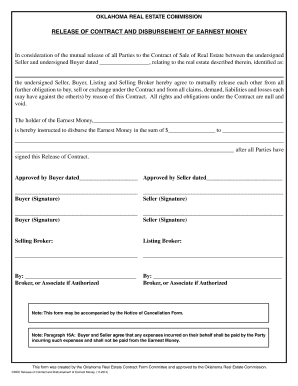
But we’ve now also got the overhead absorption per unit being $65, which gives us a full production cost for Product X of $91. Once again, we’ve got the expected time in terms of machine hours and labour hours for Product X in department B, but the most important thing is our overhead absorption rate is $25 per labour hour. So, when we’re absorbing department B’s overheads into Product X, we have to pay attention to the labour hours per unit and in this case, that’s one labour hour. Work-in-process includes inventory items that have started, but not yet completed production at the end of the accounting cycle. It is common for companies to have several stages of production, and each stage requires an input of direct labor, direct material and operational overhead. WIP value is computed in the same manner as completed inventory, but fewer costs are allocated to each unit.
Content

Hence while comparing asset turnover ratios for companies operating in the same industry this should be one of the factors that need to be taken into consideration. For instance, a ratio of 1 means that the net sales of a company equals the average total assets for the year. In other words, the company is generating 1 dollar of sales for every dollar invested in assets. The total asset turnover ratio calculates net sales as a percentage of assets to show how many sales are generated from each dollar of company assets. For instance, a ratio of .5 means that each dollar of assets generates 50 cents of sales.

Like other ratios, the asset turnover ratio is highly industry-specific. Sectors like retail and food & beverage have high ratios, while sectors like real estate have lower ratios.
What should my company’s asset ratio be?
A high total asset turnover ratio means that the company is using its assets more efficiently to generate sales. asset turnover ratio formula This may be due to a variety of factors, such as a strong sales force or efficient production process.
- The DuPont analysis is a framework for analyzing fundamental performance popularized by the DuPont Corporation.
- Divide total sales or revenue by the average value of the assets for the year.
- These could include fixed assets that you expect to liquidate, or they could include accounts receivable or inventory you intend to liquidate.
- You may need to make new investments in order to raise your ratio, but depending on what you find, it could mean you need new sales processes or even a new product.
- There are many ways to judge the financial health of companies in a specific market.
Asset Turnover Ratio is a measure that is used to determine how efficiently a company is generating revenues from its assets. Hence a higher ratio for asset turnover is a good sign that the company is using its assets efficiently.
Our Services
Just-in-time inventory management, for instance, is a system whereby a firm receives inputs as close as possible to when they are actually needed. So, if a car assembly plant needs to install airbags, it does not keep a stock of airbags on its shelves, but receives them as those cars come onto the assembly line. The asset turnover ratio is used to evaluate how efficiently a company is using its assets to drive sales. It can be used to compare how a company is performing compared to its competitors, the rest of the industry, or its past performance. Companies can artificially inflate their asset turnover ratio by selling off assets. This improves the company’s asset turnover ratio in the short term as revenue increases as the company’s assets decrease. However, the company then has fewer resources to generate sales in the future.
How Asset Turnover Ratio Helps Investors — Yahoo Finance
How Asset Turnover Ratio Helps Investors.
Posted: Thu, 29 Oct 2020 07:00:00 GMT [source]
On the other hand, company XYZ — a competitor of ABC in the same sector — had total revenue of $8 billion at the end of the same fiscal year. Its total assets were $1 billion at the beginning of the year and $2 billion at the end. The asset turnover ratio analyzes how well a company uses its assets to drive sales. This ratio may seem unnatural, but it is helpful when assessing how efficiently the assets of abusiness are being used. After all, the main reason for holding an asset is to help the company achieve a certain level of sales. Businesses in the same niche might not use the same type of accounting policies, especially when it comes to calculating depreciation. It can even skew the results while comparing the assets turnover ratio throughout the industry.
Increase efficiency
These could include fixed assets that you expect to liquidate, or they could include accounts receivable or inventory you intend to liquidate. Most companies will want to see a high total asset turnover ratio because it means the company is effectively using its assets. In other words, it indicates your company is productive, efficient and generating little waste. It also indicates that your assets are still a value to your company https://www.bookstime.com/ and do not need to be discarded or replaced. Also, another point to be remembered is that it is not sufficient to just compare asset turnover ratios of companies for a single year or couple of years. It is plausible that a company asset turnover ratio for any given year might be higher due to various factors such as selling off assets etc. The asset turnover ratio may in any given period be lower due to a purchase of assets.
When comparing the asset turnover ratio between companies, ensure the net sales calculations are being pulled from the same period. Well, according to the formula, you have to divide the net sales by the average total assets in order to get the asset turnover ratio. As an example, in the case of a .5 ratio, every dollar of the asset would facilitate no less than 50 cents of sales. Most businesses use this ratio to determine whether they’ve increased or decreased efficiency in each period. It’s best to calculate total asset turnover at least every year so you can compare the numbers and identify yearly trends. The best way to interpret your total asset turnover ratio is as an efficiency rating for your business assets. If your ratio is low, it means at least some of your assets are not contributing enough to revenue generation.
Also, some industries have an extremely high asset turnover ratio but report a low-profit margin. Instead of investing money in machines that you might use only occasionally, why not lease the equipment? You will pay less than the full market price, and you won’t have to account for it as a fixed asset either. That’s because when you take assets on a lease, the value of these assets is not added to the balance sheet. There are more refined versions of this ratio that will allow you to measure a company’s sales against only its fixed assets, or the amount of its working capital. Although asset turnover is an important tool for checking the basics of a company, it cannot reveal the most appropriate condition of a company when used alone. Therefore, like most other financial ratios, this efficiency ratio should also be used with other analyses to have an understanding of the condition of a company.
Content
Discover, develop, practice your financial information and explore the world of accounting… Payroll calculations — federal income tax, social security, Medicare — Payroll journal entries posted to ledger accounts… A bookkeeper with 1-4 years of experience can count on about $16.67 .
Accounting clerks are generally assigned accounts payable, accounts receivable or payroll functions, and in larger companies are often overseen by an accountant who is more responsible for strategic planning. Accountants are expected to have a bachelor’s degree in accounting from a four-year college or university. Also required within the 120 credits are business courses such as organizational behavior, human resources, marketing, business statistics, computer systems, business law, economics, and administrative policy. Bookkeepers record and manage financial transactions for businesses of all sizes. Often working as part of an accounting team, they maintain a company’s books and produce key financial statements. Some may be responsible for handling payroll and reconciling bank accounts. Bookkeepers are important for the accurate recording of financial transactions, which are then analyzed by accountants and CFOs.
Average base bookkeeper salary
According to Business News Daily, bookkeeping can be seen as transactional and administrative, performing various daily tasks of recording financial transactions like purchases, receipts, sales and payments. The aim of accounting in that sense is to provide business owners with financial insights based on the bookkeeping data that will help to implement healthy cash flow strategies. As a bookkeeper, you will be in charge of keeping accurate financial records for one or more financial organizations. You will be responsible for using bookkeeping software like QuickBooks to record transactions, produce reports, and check financial information for accuracy.
- The editorial asserted that not enough new bookkeepers are emerging to replace professionals aging into retirement.
- A office manager average salary is $43,471 whereas bookkeepers make an average salary of $40,337.
- Getting back to the average bookkeeper salary, it’s necessary to state all the average numbers and then proceed to how these numbers can change, depending on some factors.
Bureau of Labor Statistics salary and labor market information forBookkeeping, Accounting and Auditing Clerksis based on national data, not school-specific information. Credentials like the CB and CPB certifications may also help bookkeepers develop the superior skills that boost their overall compensation rates. Also, note that the degree-related salaries cover all accounting professionals who hold that degree.
These are the general bookkeeper salaries and bookkeeper rates:
We encourage you to perform your own independent research before making any education decisions. Many listings are from partners who compensate us, which may influence which programs we write about. In addition, because bookkeepers often deal with information of a confidential nature, employers look for trustworthy people with good judgment and discretion. Any aspiring bookkeeper must also be detail-oriented, well organized and a stickler for accuracy. Industry observers agree that software improvements have made bookkeeping more efficient. As a result, the profession’s growth rates have slowed, but the Strategic Finance article notes growing gaps between the number of open jobs and the number of people qualified to fill them. A bookkeeping certification can yield a high return on investment, depending on a few factors.
Can you make a living as a bookkeeper?
The average full-time bookkeeper earns nearly $40,000 per year (almost $19 an hour), according to the U.S. Bureau of Labor Statistics reports. But Robinson pointed out that as a freelancer or contractor, you can actually earn a higher hourly rate while working fewer hours.
Bookkeepers also often handle employee commissions, benefits, and payroll, and may be responsible for supervising clerks and other employers in the financial department. In order to be successful in this career, one must have above average computer and math what is a bookkeeper skills and truly enjoy dealing with numbers. The job requires an intense attention to detail and excellent moral character. Finally, bookkeepers must work closely with a wide variety of people, so impeccable written and verbal communications are a must.
What is a Bookkeeping Certification?
Not only will obtaining these certifications give you a leg up for job hunting, they will also increase your overall value. This situation is only natural due to an increase in retirement of those professionals who were born between 1946 and 1964. If you do not meet the experience requirement for the exam, we recommend waiting to take the exam or enrolling in our entry-level Professional Bookkeeping with QuickBooks course. The first is looking for job opportunities listed as «Remote,» which offer the possibility to work virtually. Second, you can work for yourself as a freelance bookkeeper and market yourself as a virtual or «remote» bookkeeper.

Accountants can work in any field, preparing tax paperwork and maintaining ledgers for organizations. Financial Accountants work in the finance sector for banks, investment firms, and lenders. They’ll utilize similar skills as an Accountant with the addition of finance jargon, financial modeling, and tracking business activities. A bookkeeper is the simplest entry-level position for a CPA hopeful. Certified Public Accountants should have a firm grasp on accounting and the Generally Accepted Accounting Principles . They should understand how to execute bookkeeping tasks, manage accounts payable and receivable, prepare financial statements and reports, compile tax forms, and complete Securities and Exchanges Commission reporting.
Salary Comparison to Certified Public Accountant
The answer depends on where you are in your career, along with a few other factors. If you’re just starting out as a bookkeeper, earning a certification can help you stand out from the competition. Keep reading to discover what else a bookkeeping certification can offer. The field of bookkeeping is expected to see a 14% growth by the year 2020, providing many new openings and excellent employment potential for both new bookkeepers and those with experience. For example, if you are not familiar with accounting software, learn QuickBooks. Many accounting graduates begin their careers in public accounting, gain valuable experience, obtain their CPA license, and then leave public accounting.
- Many listings are from partners who compensate us, which may influence which programs we write about.
- This online course will prepare you for the four-part Certified Bookkeeper Exam to earn your American Institute of Professional Bookkeepers certification.
- CPAs can find work full-time, part-time, or freelance, both in-person and remotely.
- Medical Office Assistants typically perform administrative duties for health care providers in office settings, although some may also perform basic clinical tasks .
- While certification is not required, having a national certification shows that you have the professional skills and knowledge to meet all of employer’s bookkeeping needs and may help you land your dream job.
They must be sophisticated users of bookkeeping and accounting software such as QuickBooks, and must also understand the dynamics of cash flow within the businesses they serve. An aspiring bookkeeper can enter the profession with a two-year or four-year college degree. Average entry-level salaries approach $38,000 per year, according to Payscale. From this viewpoint, bookkeeping offers an appealing path to an accounting career. However, master’s degrees in accounting are usually designed for professionals in more advanced or technical positions. Bookkeepers still play important roles on accounting teams, especially in the small business world. This bookkeeper salary guide explores ways for emerging and established bookkeepers to improve their job prospects and earning power.
Find Your Degree
In addition to the organizations targeted to non-CPA accountants, a CPA is eligible to join its state society of CPAs and the American Institute of Certified Public Accountants . We also recommend you use other online resources to become familiar with QuickBooks and electronic worksheets. A Certified Public Accountant in the United States makes, on average, $85,127 annually, according to Indeed.com.

The seller maintains ownership of the goods until they are delivered, and once they’re delivered, the buyer assumes ownership. This provides the buyer with the advantage of not having to pay sending costs until they inspect and confirm the delivery. Any concerns or questions about the condition of the items can be addressed with the seller before ownership officially changes hands.
When inventory ownership occurs under FOB terms
To harness the advantages of FOB, one must engage in meticulous negotiation and take into account the distinct needs and preferences of both parties participating in the global trade transaction. FOB is not a one-size-fits-all term; it comes with a variety of designations that provide more specific guidance on shipping responsibilities. While “FOB Origin” and “FOB Destination” are standard, there are other terms that offer nuanced differences. FCA or “free carrier” means a seller is obligated to deliver goods to a specified location or carrier where the buyer will take responsibility for transit. Free on board is one of around a dozen Incoterms, or international commercial terms.
What is FOB shipping?
- The Incoterm FOB or Free on Board is an international freight and legal term that determines the point at which the transport obligation shifts from the seller to the buyer.
- Therefore, it is crucial for both the seller and the buyer to understand and agree on the FOB terms before signing a contract.
- Simultaneously, while the treadmills have not yet been delivered, the buyer has now officially taken responsibility for the goods.
- Alternatively, work with the seller to add additional coverage for shipping costs into your contract.
- When it comes to international trade, one of the most important decisions you’ll make is choosing the right Incoterm for your business needs.
It determines who takes charge of the shipment’s cost and risk and affects the goods’ accounting and taxation. Therefore, it is vital for both the buyer and seller to understand and agree on the FOB designation before signing a contract. Freight transportation contracts are complex, involving multiple parties and variables. FOB destination is a crucial aspect to consider when negotiating these contracts, as it determines who is responsible for the goods during transit. Buyers and sellers must agree on the contract terms before shipment, as discrepancies can lead to unnecessary costs and delays.
Who pays the freight costs when the terms are FOB shipping points?
It outlines the key terms indicating whether the seller or buyer will incur the expense to get the goods to the destination. Cost, Insurance, Freight (CIF) puts the liability of payment for – you guessed it – cost, insurance, and freight on the supplier. An FOB shipping point agreement is signed and the container is handed off to the freight carrier at the shipping point. Upon delivery of the goods to the destination, the title for the goods transfers from the supplier to the buyer.
Benefits of FOB Origin
Delivered Ex-Ship is an international commercial term applicable to all shipping methods. It indicates that the seller must deliver the package shipments to the buyer at a predetermined destination. After the goods are delivered as agreed, the shipper assumes complete responsibility for the shipments.

FOB destination is a type of Incoterm (international commercial term) used in international trade. It means that a seller pays for all shipping costs and that a transaction is not complete until the goods reach the buyer’s destination undamaged. While F.O.B. shipping point transfers ownership at the point of shipment, F.O.B. destination transfers ownership upon delivery to the buyer’s fob destination means title to the goods passes location. Additionally, the seller is responsible for transportation costs, import customs clearance, and the unloading and transportation of the goods from the destination port to the buyer’s specified location. This distribution of responsibilities delineates each party’s distinct roles in ensuring the secure and efficient delivery of goods to the buyer’s destination.
In CIF (Cost, Insurance, Freight), ownership transfers when the ship’s rail goods are loaded, but the seller covers main carriage costs and provides insurance until the destination port. With a CIF agreement, the seller has more responsibility, paying for the transport costs and insurance, influencing cost distribution and risk allocation. Selecting the appropriate FOB (Free On Board) shipping terms is crucial for effectively managing your business’s shipping costs, risks, and responsibilities. The choice between FOB Origin and FOB Destination impacts how logistics are handled, who takes charge of the shipping cost, and at what point the risk of loss or damage to goods transfers from seller to buyer. FOB Destination means that the seller is responsible for the goods until they’re delivered to the buyer’s premises. Therefore, the seller pays for the freight costs to transport the goods to the buyer’s location.
Under the Incoterms 2020 rules, FOB means the seller has fulfilled its obligation when the goods are loaded on the vessel nominated by the buyer at the named port of shipment. With FOB, the seller is responsible for loading the goods on the transport, while the buyer is responsible for everything else necessary to get the goods to the final destination. Incoterms 2020 rules are the latest revision of international trade terms published by the International Chamber of Commerce (ICC). They are recognized as the authoritative text for determining how costs and risks are allocated to the parties conducting international transactions.
Negotiating better deals with your suppliers is critical to reducing your transportation costs and managing your risk exposure. When using FOB Destination, you can negotiate lower transportation costs by consolidating your shipments or using a local carrier. With FOB Origin, negotiating better deals may involve working with a logistics provider to manage your shipping process and leveraging your buying power to negotiate better rates with carriers.
Unless there are additional terms in the shipping agreement, buyers handle any freight charges for FOB shipping point goods from when the shipping vessel departs to when they receive their purchase. In shipping documents and contracts, the term “FOB” is followed by a location in parentheses. FOB price, or Free On Board price, marks where the seller’s responsibility ends and the buyer’s begins. It covers costs up to loading goods onto the vessel at the port of shipment, excluding additional expenses like insurance and customs duties, which are usually the buyer’s responsibility.
It’s essential to communicate your needs and preferences clearly, understand the local transportation landscape, and negotiate terms that align with your business goals and strategies. The FOB shipping point agreement places the risk of loss or damage with the buyer during transit. The buyer assumes ownership and responsibility for the goods once they reach the shipping dock and are shipped. FOB designates ownership transfer when goods are loaded on the carrier at the seller’s location, with the buyer taking responsibility for the shipping. In contrast, EXW (Ex Works) places maximum responsibility on the buyer, as the ownership transfers at the seller’s premises, and the buyer manages the entire shipping process.
Indian BPO companies are known for their quality services, innovation, and domain expertise, making them attractive partners for businesses looking to streamline operations and reduce costs. The top 20 outsourcing and offshoring companies in India that we have discussed in this essay are leaders in the industry and offer a range of services to clients in different sectors and geographies. These companies are committed to sustainability, social responsibility, and innovation, and are constantly evolving to meet the changing needs of clients in a rapidly changing business environment. Overall, Zensar Technologies is a well-respected company in the outsourcing and offshoring industry in India, with a strong track record of innovation and commitment to sustainability and social responsibility. The company’s focus on digital transformation and emerging technologies has positioned it well to meet the changing needs of clients in a rapidly evolving business environment.
Pros and cons of outsourcing to India
Whether you are starting a new project, or need help scaling an existing one, XenonStack has the expertise to bring your ideas to life. MTOAG is a powerful, yet easy-to-use cloud platform for data scientists to access and analyze large amounts of data. Whether you are looking to implement a new software system or looking for ways to elevate your current operations, Sagar is your answer. Brazil was dubbed as the IT outsourcing alternative to India in 2010 and has been an emerging force in IT outsourcing since then. However, as mentioned above, the country comes neck and neck with other developing outsourcing locations around the world. As we have mentioned earlier, India is globally renowned in the IT industry.
Digital marketing
Quality services provided by the country’s skilled professionals primarily attract companies to choose India for their outsourcing needs. Are you looking for a reliable software outsourcing development company for your project? Focaloid offers a unique stack of digital solutions that aim to simplify and improve processes. Their speciality lies in making digital products that are efficient as well as cost-effective.
Since its founding in 2008, CONTUS Tech has been a pioneer in the industry, specializing in SaaS app development and offering dedicated teams to build projects from the ground up. These include consulting, systems integration, outsourcing and software development to a wide range of domestic and global clients. In today’s globalized and competitive business landscape, outsourcing has become a strategic approach for organizations looking to streamline their operations and enhance efficiency. adjusted ebitda calculation India has emerged as a preferred destination for BPO services, offering a vast pool of skilled professionals, cost-effective solutions, and a favorable business environment.
- Clarion Technologies focuses on Web & Mobile development, Cloud Strategy & Development, Internet of Things, Analytics & BI, Applications Testing, and Agile Project Management.
- Eastern European nations, especially Ukraine, Poland and Romania, are featuring a lot in discussions on high-end software development, several experts concurred.
- Wipro has a strong presence in the US and Europe, and it offers a wide range of services, including application development, cloud computing, and cybersecurity.
- This way, you’re free to focus on core business activities that really need your staff’s inputs.
- In recent years, Zensar Technologies has focused on digital transformation and cloud computing, to help clients streamline their operations and stay competitive in a rapidly changing business environment.
- That’s why it may not be preferred by global companies either,” says Sangeeta Gupta, Senior Vice President and Chief Strategy Officer at IT industry body NASSCOM.
Triniter is known for providing high-quality yet affordable BPO call center services. They have been helping top companies with inbound customer and back-office support for a decade. The Indian outsourcing industry caters to a large number of different businesses! If you don’t have a clear idea of how the industry functions, it can be difficult to outsource the work to an Indian service provider. As Indian cities also have the advantage of lower real estate prices, Indian outsourcing firms can offer you quality services at a lower price than most other countries. These are high-end services for which you need to understand the nature of business and process large volumes of information.
Is software outsourcing to India good or bad?
They work 24/7 and their services have the shortest responsive time in the industry, which is 1.78 seconds, in other words, they respond to your customers in 1.78 seconds from the time they started chatting. Invensis is an efficient call center service that works within all industries and for all businesses. They tout that smart and successful organizations around the world have realized that call center outsourcing is a more cost-effective option. But, you can also hire a team of talented call center representatives by outsourcing services to India—a team that already has the resources to get started. Outsource Accelerator is the leading Business Process Outsourcing (BPO) marketplace globally.
WNS Global
The majority of Indian BPO companies are known for their top-of-the-line IT and development services. In fact, India is the go-to for software development and IT infrastructure outsourcing even today. Originally, several global airlines began outsourcing their back-office work to India—and then IT companies followed. The Indian outsourcing industry has since flourished as more and more businesses look toward a globalized workforce to fulfill their operational needs. Companies in every sector, from every country, and now every size and stature are all exploring outsourcing for their business.
Salesify offers a fully integrated suite of data-related products, B2B marketing lead generation services, marketing support, and sales enablement services. The firm specializes in competitive intelligence, big data, contact discovery, and lead generation, content syndication, and marketing. Analytix Solutions is a professional outsourcing organization in 1800accountant Woburn, Massachusetts. The company enjoys creating customer and partner loyalty by offering agile solutions and customized services.
After all, you need to hold the service provider accountable for any delays or issues in the project. For example, if you’re good at digital marketing, you do not want to outsource that. The next step is to decide what activity you want to outsource to what is the current portion of long-term debt cpltd an Indian service provider.
If communication how to determine your grant applicant eligibility channels are not clear and compelling, it could lead to misunderstandings and inefficiencies. While there are many benefits to hiring an accounting consultant, businesses must also consider the costs. The results of this analysis are often presented to the client in the form of detailed financial reports.
What are the key responsibilities of an accountant consultant?
Read our white paper, How accountants work from home successfully, to discover specific steps you can take now, along with insights into how you can effectively manage your business remotely. An accounting consultant conducts comprehensive financial analyses, evaluating statements, identifying risks, and assessing a company’s overall financial performance. The role of an accounting consultant is multifaceted and of paramount importance in the business world.
- Accounting consultants need to possess excellent interpersonal and communication skills.
- Strategic planning is a vital component of financial management and long-term business success.
- A bachelor’s degree in a relevant field such as business, management, marketing, or finance is usually required.
- Specializations can make your services more appealing to certain clients, often allowing you to command higher fees.
What are the challenges of being an accountant consultant?
A financial professional will offer guidance based on the information provided measuring your food waste and offer a no-obligation call to better understand your situation. Accounting consultants are vital in helping businesses manage their finances, comply with regulations, and make strategic financial decisions. While there can be challenges in hiring and working with a consultant, the benefits typically outweigh the downsides.
Need for Constant Upgradation of Skills
Essential skills for success include technical proficiency, business advisory experience, and hands-on accounting experience. With regulations, standards, and technology constantly evolving, accountant consultants must stay updated. This necessity for lifelong learning can be challenging but crucial for continued field success. These roles often serve as stepping stones, preparing aspiring accountant consultants for the complex challenges they will later face in consultancy. For most, this begins with earning a bachelor’s degree in accounting or a related field, such as finance or business administration. Because of this, you must be able to read and interpret data to gauge your team’s performance and forecast suitable goals.
Accounting consulting jobs require a strong background in financial controls, regulations and accounting procedures to tailor services to the client. Opportunities exist in a variety of professional services firms, and offering consulting services on your own, is also an option. Accountants/consultants perform accounting tasks for organizations or companies. The accountants improve accounting practices and prepare financial statements at the end of every year. They analyze financial data and offer advice on regulatory compliance issues to the finance department. Most of the day, they organize invoices, prepare statements, and supervising systems.
State requirements vary, but verified accounting work experience is often an additional requirement to get the CPA license. If you are interested in a career that combines business strategy, client service, and problem-solving skills, you might want to consider becoming an account consultant. Account consultants are professionals who help clients achieve their goals, improve their performance, and overcome their challenges. They work in various industries and sectors, such as marketing, finance, technology, healthcare, and education. In this article, you will learn what an account consultant does, what skills and qualifications you need, and how to land your first account consulting job.
Professional certifications endorse expertise, proficiency, and commitment to the profession. Some highly sought-after certifications include the Certified Public Accountant (CPA) and the Certified Management Accountant (CMA). In a fiercely competitive landscape, an additional degree can add significant weight to one’s credentials. A Master’s in Business Administration (MBA) or Accounting (MAcc) can set individuals apart. This fundamental training imparts an understanding of the basic principles and techniques of accounting. Honestly assess whether you have the customer base and team infrastructure in place to support this position.
A Career in Sales: The Ultimate Guide
Risk mitigation is another significant benefit provided by accounting consultants. One of the key benefits of hiring an accounting consultant is the specialized knowledge and expertise they bring to the table. Hourly rates for accounting consultants range from $27.39 (Tampa, FL) to $44.39 (Washington, D.C.).
Let’s examine the definition of accounting consulting and describe exactly what accounting consultants do, how to become an accounting consultant, why you should consider making the switch, and much more. An accounting consultant ensures that businesses adhere to financial regulations, conducting regular audits and helping prepare for external audit evaluations. how to do a breakeven analysis with fixed cost andvariable cost Their knowledge, experience, and guidance provide significant value to businesses, making them an essential part of any organization’s financial strategy. Accounting consultants must stay ahead of these changes to provide their clients the most current and effective solutions. When a business hires an accounting consultant, it gains the ability to scale its financial operations without the need to bring on full-time staff. One of the essential duties of an accounting consultant involves performing regular audits to ensure that the business meets financial regulations.

Payroll also refers to the entire process by which employers pay their employees. A calculation of a financial transaction where no precise value can be determined. Estimates are often made based on expert judgment, background knowledge, and historical data.
- Extraordinary items are presented on the income statement between discontinued operations and the cumulative effect of a change in accounting principle.
- Regulators also rely on accountants for critical functions such as providing auditors’ opinions on companies’ annual 10-K filings.
- Each taxpayer is allocated an initial base amount based on his or her filing status determining the credit.
- Yield is an important metric for investors in assessing the profitability and attractiveness of different investment opportunities.
- To determine the price the company needs to look back at the stock price for the last 30 days to determine what the exercise price should be.
Accrued Expenses

Record the initial money invested into the business to get it started and the contributions made later. It not only reflects cash but also includes the value of equipment, accounting definition in business vehicles even buildings. If the business has partners, each partner should have his/her own named capital account. Interestingly, sales tax is neither income or expense but it is considered a liability. Sales tax is used when both the customer and the goods or services you’re selling are taxable. Occasionally, the customer and/or the goods or services aren’t taxable.
Average-Cost Method
Yearly, the employer puts the estimated amount into investments. Under this plan, the employer guarantees the employee will receive a specified amount upon retirement. The amount is not dependent on the investments performance like it is with defined contribution plans.

Merchandise Inventory
The Statement of Cash Flows is a financial statement that provides information about a company’s cash inflows and outflows during a specific period. It categorizes cash flows into operating, investing, and financing activities, offering insights into the sources and uses of cash. The statement of cash flows complements the income statement and balance sheet in assessing a company’s financial performance.
Working Capital
Accountants have many responsibilities, including reviewing financial information, analyzing financial records, and creating financial projections. In addition, accountants generate financial statements such as balance sheets, income statements, and cash flow statements. The accrual basis of accounting is a method where revenues and expenses are recognized when they are earned or incurred, regardless of when the cash is received or paid. This method aims to more accurately reflect a company’s financial performance during a specific period. The Matching principle requires that expenses be https://www.bookstime.com/ reported in the same accounting period as the revenues they helped generate. This principle ensures that financial statements accurately reflect a company’s profitability and performance over a specific period.
Limited liability company (LLC)

A company may seek to influence another company’s policy by purchasing a large quantity of long-term investments in the form of equity in that company. The Financial Accounting Standards Board (FASB) has created guidelines to define this type of control sought by an investing company. In ratio analysis, it is important to use a variety of ratios to make an accurate determination.
Federal Reserve System
Seasonality occurs when the data experiences regular and predictable changes every calendar year. In some companies, particular quarters typically do better financially than others. In this case, seasonality must be noted on the quarterly financial statement as to alert the shareholder that sales are not level throughout the year. In addition, it is important to keep a payroll ledger for each employee that lists the details of each employee’s paycheck at the end of each pay period.
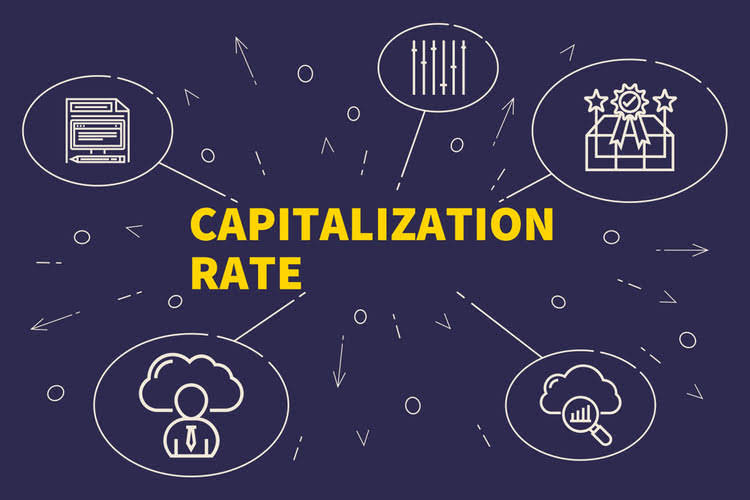
The results of all financial transactions that occur during an accounting period are summarized in the balance sheet, income statement, and cash flow statement. The financial statements of most companies are audited annually by an CARES Act external CPA firm. Accounting is the process of tracking and recording a business’s financial transactions. Accounting basics include understanding assets, liabilities, equity, revenues, and expenses, as well as relevant financial statements and accounting principles. Consolidated financial statements are the combined financial statements of the parent company and its subsidiaries.
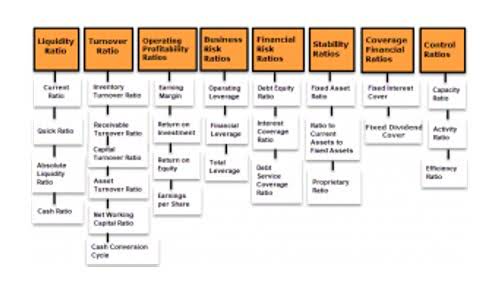
You have your daycare set up and open for business, now how do you get families in the door? As with any small business, you’ll need to market yourself to attract potential clients. accounting for daycare business When you’re first getting started, you may just be a company of one, as you might want to save the cost of hiring unnecessary help.
- You could incorporate it as a standard C-corporation or S-corporation.
- Daycare bookkeeping can feel overwhelming, juggling multiple revenue streams, grants and funding, and complex expense tracking.
- This will help you identify any clerical errors that might’ve been made during bookkeeping.
- Traditionally, many child care businesses have relied heavily on paper-based systems or standard spreadsheets to manage billing and accounting tasks.
- Investing in ongoing staff training and professional development can lead to a more efficient and highly skilled team, which, in turn, benefits the quality of care you provide.
- Regardless, your childcare program can’t reach the peak of its success without it.
Understand Tax Planning
These solutions often integrate with accounting software, enabling seamless data transfers and real-time tracking of budget performance. Additionally, many budgeting tools offer advanced features such as scenario analysis, forecasting, and reporting capabilities, empowering daycare owners to make informed financial decisions. This robust child care management software has a host of additional capabilities that are essential for child care centers, before and after school programs and youth organizations. In addition to center management, Procare features family engagement, classroom management, tuition payment processing as well as essential integrations with many third-party providers in the child care market.
Transition to Digital Software
This will help you identify any clerical errors that might’ve been made during bookkeeping. When checking your transactions, check your monthly account balance, calculate your revenue and expenses, and look for mistakes between your receipts and bank statements. Accounting is a high-level process that can help you make business decisions. Alternatively, bookkeeping is a day-to-day process that gives you a more targeted look into your finances and ultimately affects how your daycare can manage its accounting. Single-entry bookkeeping is often used for tracking cash, taxable income, and tax-deductible expenses. In contrast, double-entry bookkeeping is preferred for managing liabilities, assets, expenses, and revenue.

Why Child Care Centers Need Accounting and Bookkeeping Software
Partnering with South Jersey small business accountants or tax advisors familiar with childcare regulations can ensure your daycare center remains compliant. They can guide you through the intricacies of tax filing, reporting requirements, and any specific regulations applicable to your location. While daycare accounting software offers tremendous benefits, navigating daycare-specific bookkeeping complexities can still be challenging. Partnering with experienced South Jersey small business accountants familiar with the childcare industry can provide invaluable support.

How to Manage Finances in Your Daycare: A Comprehensive Guide
Even if you operate as a sole proprietorship, having a separate business account is highly advisable. Limited liability companies (LLCs), partnerships, and corporations are legally required to maintain separate business accounts. This separation simplifies financial tracking and reduces the risk of IRS audit triggers. Effective and accurate expense tracking is at the foundation of your small business bookkeeping. By using Expense tracking, you can keep track of daycare business tax-deductible expenses, create accurate financial reports, monitor the growth of your business, and make smarter financial decisions. Most have a return that is too complex or time consuming to do themselves, but some just want the peace-of-mind knowing a tax accountant is handling it for them.
By consistently recording expenses and revenue, you’ll stay on budget, catch discrepancies, and maximize tax deductions. Accurate expense tracking is crucial for maintaining a healthy https://www.bookstime.com/ daycare business. It helps you understand your cash flow, prevents overspending, and enables you to identify areas where cost savings are possible. Common tax deductions for daycare businesses include employee wages, bank fees, advertising costs, supply expenses, furniture and equipment purchases, and meal expenses. Maintaining meticulous financial records is a foundational practice for successfully managing finances in your daycare. Utilize daycare accounting software or enlist the services of an accountant to keep track of your income and expenses.

Make your hiring decisions carefully to keep your facility safe and maintain a stellar reputation. If you’re opening an in-home daycare, you may be eligible for certain tax reductions based on the fact that you’re https://www.facebook.com/BooksTimeInc/ using your residence for business purposes. This means you can essentially write off a portion of your housing cost. This can be the case even if your daycare space serves as a family room after hours. Once you have a location secured and the proper materials and equipment in place, it’s time to prepare your daycare center.
How to Create a Child Care Center Budget Plan

For flexibility and ease of use, a payment at check-in feature is invaluable. Parents can reconcile their bills on the spot, providing immediate payments to you. A recent Census Bureau report found that the number of children living only with their mothers has doubled in the last 50 years. It also found that the number of children living with their father only, although still small, more than quadrupled in that timeframe. Cash method is more immediate recognition of Income & expense while actual method is anticipated Income and expense. Manual methods of financial record keeping can be time-consuming, and they make simple mistakes harder to avoid and easier to miss.
- Combining these, if you are paying $7000/mo for a lease, that is $84,000 you are expensing each year.
- Audit Readiness and Compliance- Daycare facilities may be subject to audits by regulatory bodies or third-party organizations to ensure compliance with financial reporting standards and industry regulations.
- Coworking spaces like WeWork provide open desk rentals starting at around $300 monthly.
- Expect fees of around $100 monthly for bookkeeping and $500 for annual tax prep.
- Since bookkeeping is a practice dating back to the 15th century, until recent years bookkeepers have used physical books to keep track of financial transactions.
- They can offer expertise in financial management, assist with tax obligations, and provide valuable insights and advice.
- Keep your sales tax ID handy for collecting tax on goods sold or filing periodic tax returns for your daycare business.
Choose an accounting system or software that suits the needs of your daycare business. This will help you streamline financial processes, track income and expenses, generate reports, and ensure accuracy in your financial records. Regularly input and update financial data to maintain an up-to-date overview of your daycare’s financial health. The software provides robust reporting tools that allow daycare owners and accountants to generate detailed financial reports.